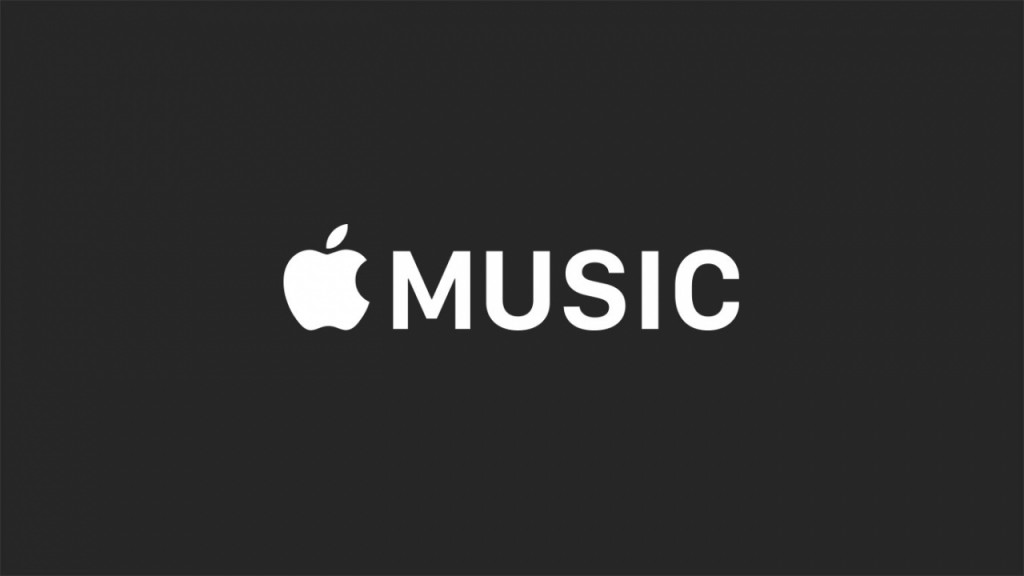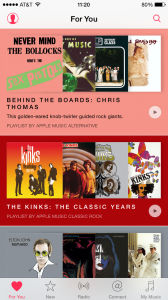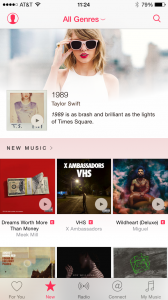Since acquiring my first compact disc in 1999 (a copy of the soundtrack to E.T. the Extra-Terrestrial, because my childhood tastes defied convention), I have racked up nearly 2,000 of them in my collection. You name it: compilations, CD singles, increasingly heavy box sets—I’m still buying ’em, having bought Miguel’s excellent new album Wildheart and Kacey Musgraves’ Pageant Material at a Best Buy last week.
But I’d be insane to tell you music on a disc is the way of the future. In 2014, more than 164 billion songs were listened to on streaming services—a growth of 54% over last year—while merely 140 million CDs were sold in the same time frame, a considerable tumble from the 730 million units moved in 2000.
On June 30, Apple finally entered the world of streaming music with the launch of Apple Music. It could not have come at a more crucial time: download sales are starting to decrease alongside physical music sales, and Spotify’s streaming service now counts 60 million users.
I’ve spent much of my post-undergrad life test-driving music services: much of my earliest major writing online was scored to Pandora channels; my first smartphone utilized MOG, Slacker and even IHeartRadio; and I signed up for Spotify’s paid service the day it was made available in America. I jumped at the chance to document my thoughts about Apple Music; ultimately, it’s a fine streaming experience from a major player, but needs to fix some crucial oversights to keep it truly A-list.
Apple Music, currently available with iOS 8.4 and iTunes 12.2, starts by sidestepping Spotify’s freemium model, offering full access at $9.99 per month with a three-month free trial baked in. From the start, the name of the game is curation. Sign up, and Apple Music asks you for some favorite genres and artists, using a system of bubbles not unlike Beats Music, Apple’s major acquisition in the music streaming game. Tapping and double-tapping was fun enough, though I would’ve tactilely enjoyed swiping away disliked artists more—and, I swear to God, I had to banish OneRepublic three times from my cloud of bubbles.
From there, Apple Music starts you off with “For You,” an offering of pre-made playlists and albums tailored to your tastes. My three playlists were one devoted to producer Chris Thomas (The Sex Pistols, Elton John, INXS), The Kinks, and classic rock acts flirting with disco. To borrow a common phrase among the Deadshirt community, that is extremely my shit. Apple Music knew me so well I was already prepared for my bleached skull to be crushed underfoot by an Apple Music-powered Terminator endoskeleton.
“New” is where you’ll find everything that’s hot: new offerings, top offerings and lots of playlists. There’s quite a bit to say about the offered catalog (largely accessible from the oddly placed search function in the upper right corner) which is perhaps Apple Music’s biggest boon. Taylor Swift’s got her music here and nowhere else. AC/DC made their catalog available worldwide concurrent with Apple Music’s launch (though you can get it anywhere). Peter Gabriel, who doesn’t have his works on Spotify, now has a good streaming option, having recently streamlined his catalog for iTunes. The soundtrack to Jurassic Park, curiously missing from most streaming outlets, is here on Apple Music. Just about any nitty-gritty weird iTunes-exclusive track, whether it was an EP or a digital-only bonus track, is now yours for the picking. That includes many of the dreaded “album-only” tracks of yore. It’s not all perfect—The Beatles are still missing in action, and Prince pulled his catalog off every streaming service but Tidal last week—but it’s fun to test the limits of what Apple Music has to offer.
The curated playlists in the “new” tab are certainly interesting to deep dive into. Apple Music editors, as well as a host of brands including Complex, VICE, Rolling Stone, Shazam and others, have been working around the clock to devise playlists around any musical feeling or idea you could wrap your brain around. Playlists to prep for dates? They’re here. Michael Jackson ballads? You got it. Tracks released on MCA Records, a label nobody under 30 has much of a grasp on? Yeah, it’s here. And that should be great! But, in fact, this is part of where the cracks start to show.
It happened innocuously enough: while grooving to a pre-made mix of eighties soundtrack hits, I found myself hearing more of Stevie Wonder’s “I Just Called to Say I Love You” than absolutely necessary. That’s not a dig at the quality of the song: when released as a single from the soundtrack to The Woman in Red, the song was shortened from 6:16 to 4:16—hardly an uncommon practice in the pop market, and any radio station would reach for that version, readily available on compilations, when giving it a spin. But that didn’t happen. It seems like an honest enough mistake, but someone who was curating the same playlist for a label would certainly make that distinction. By the same token, a playlist I sampled utilized Janet Jackson’s hit “Miss You Much,” but sourced it from its parent album, 1989’s Rhythm Nation 1814, where many tracks are presented in a continuous sequence and “Miss You Much” features an oddly jarring, cut-off-at-the-pass intro. Janet’s hits compilations, meanwhile, use a radio-friendly version with a clean intro.
These might seem like minor quibbles, but with increased exposure it’s clear Apple Music wants you to hear music the way they want it to be presented. That becomes a problem when it’s clear that music geeks with an ear for these kind of weird, unsettling experiences could improve the experience that much more. I was one of countless kids who downloaded Simon & Garfunkel’s “The Sound of Silence” off Limewire in college only to discover it was pulled off the Simon & Garfunkel’s Greatest Hits CD, where it’s crossfaded with a strange burst of crowd noise from a preceding live track. Experiences like that turned me into a heat-seeking missile for superior playlist experiences, a trait I’ve happily shared with my fellow music writers here at Deadshirt.
Apple’s desire to be in command is ultimately what’s going to doom Apple Music, if they’re not careful. Spotify offers a lot of “on-brand” playlists, but its interface doesn’t dissuade the user from creating their playlists their way, or sharing them with friends. Apple Music has less luck: sharing or linking to songs and albums is easy enough, but creating your own playlists (or adding tracks to your own offline library, the original function of the mobile Music app) is in fact impossible without opting into iCloud Music Library, Apple’s scan-and-match service that could lay waste to the collections of those who like to heavily customize their own song metadata. Without that, you’re at the mercy of Apple’s chosen curators (easily culled on the otherwise ineffectual Apple Connect social media feed) or the worldwide Beats 1 Radio, which I found to be wildly lacking when I test-drove it (celebrate Pharrell’s excellent production discography, but maybe play full songs instead of snippets, another thing I’d never expect from traditional radio).
Ultimately, Apple Music is going to live or die by its ability to work for the consumer, not the other way around. Surely there are not many people like me, desperate for a more geek-friendly playlist, but I don’t think I’m alone in the desire to share my tastes with people I care about (and get great suggestions from those same people and others) on my own terms. It’s this spirit of discovery that kickstarted the digital music revolution that Apple so gracefully rode to glory on the back of the iPod and iTunes.
The music business is changing, but that change can be good. Apple Music owes it to itself and its consumers to get out of the way of these changes, lest they suffer the same fate as the labels who work to provide them (and us) with precious music.
Apple Music is now available for free trial on iTunes and iOS.






